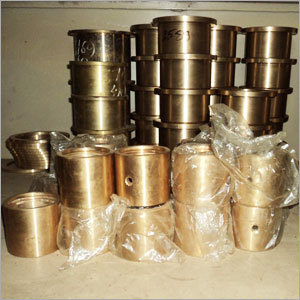Bronze Casting
Product Details:
- Product Type Cast Products
- Material Bronze
- Surface Finishing Polished
- Color Golden
- Click to View more
Bronze Casting Price And Quantity
- 900 INR/Kilograms
- 50 Kilograms
Bronze Casting Product Specifications
- Polished
- Cast Products
- Golden
- Bronze
Bronze Casting Trade Information
- 1000 Kilograms Per Month
- 7 Days
- All India
Product Description
Casting in bronze, an alloy mostly made of copper and tin, is the technique of making items or components out of bronze. Because of its enduring qualities, strength, and aesthetic appeal, bronze has been utilised for ages.
Bronze casting often includes numerous steps, including:
- Pattern creation: Materials like wood, wax, clay, or 3D printing are used to make a pattern or model of the intended thing. The blueprint depicts how the bronze casting will ultimately look.
- Making a mould: Using a mould material, such as plaster, sand, or ceramic, a mould is created around the pattern. To allow for the removal of the pattern and the following pouring of molten bronze, the mould is often produced in two or more portions.
- Removal of the pattern: The mold's cavity is left with the shape of the desired product after the pattern has been taken out.
- Bronze casting: Sprues and gates are channels via which molten bronze is poured into the cavity of the mould. Bronze fills the mould and conforms to the design.
- The molten bronze cools and solidifies inside the mould, taking on the pattern's shape as it does so.
- Finishing: The casting is cleaned and finished when the bronze has cooled and the mould has been removed. This could entail surface treatments, polishing, and the removal of extra material.
| Material | Bronze |
| Shape | Round |
| Usage/Application | Industrial |
| Color | Golden |
| Pressure | Medium Pressure |
| Is It Rust Proof | Rust Proof |
| Finishing Type | Polished |
| Country of Origin | Made in India |
| Packaging Type | Box |
FAQ
1. What is casting in bronze?
Ans - In order to create a specific shape or object, a metal alloy predominantly consisting of copper is heated and melted in a furnace. This technique is known as bronze casting.
2. What are the benefits and drawbacks of casting bronze?
Ans - Benefits include the material's outstanding thermal conductivity, the fact that bronze is a highly durable substance with good anti-corrosion qualities, and the fact that bronze casting is a cost-effective technique with excellent dimensional accuracy. It can be expensive, has a limited output, and not all moulds can be used to cast bronze, which are some of its drawbacks.
3. What casting equipment do I need for bronze?
Ans - A crucible, a furnace or kiln, a mallet made of wood or ceramic, a flask and an excellent investing media are required. Tongs and a hand drill can also be necessary in addition.
4. How long does bronze casting take?
Ans - The size of your bronze item will determine how long it takes. For minor objects, it typically takes 10 to 15 minutes, but larger items might take up to an hour.
5. Describe the bronze casting process.
Ans - There are nine steps in the casting of bronze: preparing the mould, melting the metal, skimming the crucible, stirring the metal, pouring the metal, shaking out the casting, de-flasking and cleaning, trimming and inspecting, and finishing.

Price:
- 50
- 100
- 200
- 250
- 500
- 1000+






 Send Inquiry
Send Inquiry Send SMS
Send SMS Call Me Free
Call Me Free
